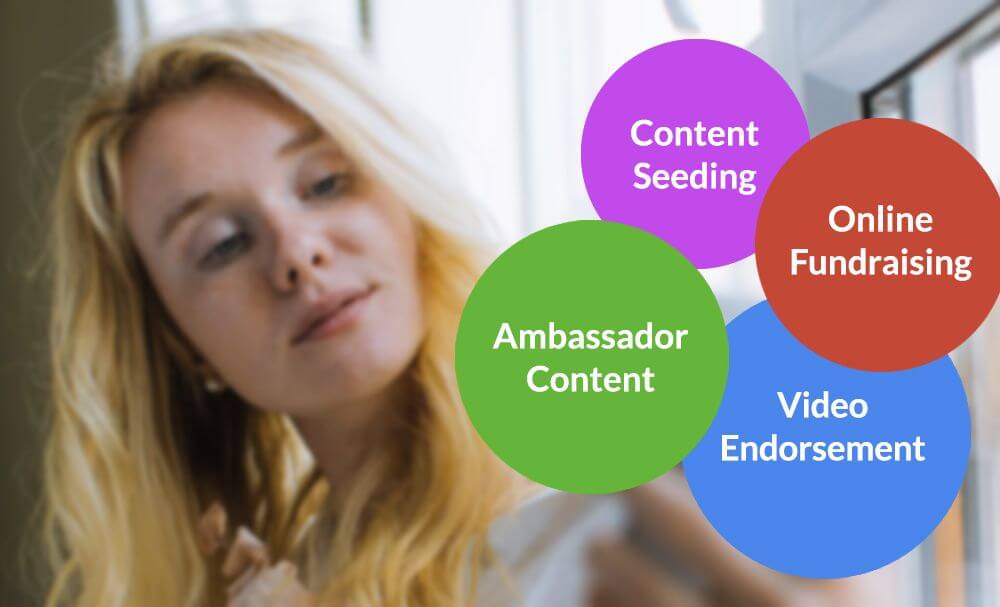What's in this article
Don’t panic, 2020 may have been a difficult year, but here’s some advice and guidance on how to make sure your charity is well-equipped digitally heading into 2021…
Introduction
It goes without saying that 2020 has been one of, or if not, the most challenging years for charities for obvious reasons. Additionally, the uncertainty that looms on the horizon heading into 2021 regarding the Coronavirus pandemic places great importance on combating digital challenges for charities all across the UK.
Statistics quoted within this article are from the Charity Digital Skills Report 2020.
It has not all been doom and gloom over the past year with 66% of charities transitioning to delivering all work remotely, signalling adaptability when it is needed most. Although, 27% of charities were left with little choice but to cancel services due to the lack of digital skills and technologies.
But don’t worry, we are going to outline some of the most important digital challenges charities will face in 2021 and how you can overcome these effectively.
A clear digital strategy
Understanding your charities business and audience is crucial for successfully operating online.
Alarmingly, 51% of charities don’t have a digital strategy in place, whether that be one incorporated into the organisational strategy or a standalone plan.
A great way to understand your audience is to use existing analytics platforms in order to gather information such as:
- Location
- Pages visited
- Viewed content
- Completed actions on website
A great way to obtain such data is through Google Analytics. It can be an overwhelming insight at first with the in-depth analysis provided, so here is a great article outlining 10 easy findings you can discover from your Google Analytics account.
This information of existing donors can then be used to create a plan of how to go about converting potential donors. A brilliant method to follow is the ‘See-Think-Do-Care Model’.
The STDC model functions as a simplistic yet powerful framework for businesses that aims to remodel the way you market and communicate with your designated target audience.
The model’s main purpose is to allow you to view your planning through the perspective of the customer’s eyes.
At centre-stage of the model are two principles:
- There are 4 audience intent clusters.
- In order to be successful, you must solve all four.
| Audience intent cluster |
Who belongs in the cluster? |
Their intent / midset |
|---|---|---|
| See | Largest addressable qualified audience (LAQA) |
Discover your brand for the first time |
| Think | LAQA with mild commercial intent |
Think about your brand's offerings |
| Do | LAQA that's ready to transact |
Willing to or in process of purchasing from you |
| Care | Repeat customers | Affinity for your brand |
You can then utilise these findings to create content with the specific aims of informing, guiding and persuading website visitors to donate.
Failing to operate with a clear, purposeful digital strategy will likely lead to difficult and conflicting marketing campaigns, ultimately resulting in fewer successes.

Being found on Google (SEO)
It’s all well and good detailing a digital strategy and theories on how your charity website will lead to increased fundraising, but if you are not being seen, due to low volumes of traffic to your site, then your websites digital success will be very limited.
This is where Search Engine Optimisation (SEO) comes into its own, which functions to increase the quality and quantity of traffic to your site through organic search engine results:
- Quality: Anyone can visit your site, and you want visitors who are genuinely interested in volunteering or donating to your charity.
- Quantity: Once the right users are entering your site from the search engine results pages (SERPs), the more traffic the better.
- Organic results: Ads make up a large proportion of multiple SERPs. Organic traffic, on the other hand, is any traffic you don’t pay for on a “per click” or “per impression” basis.
There are various ways you can optimise your site to rank higher on SERPs, for instance:
- Create good-quality content for your site that your users will want to read.
- Gain important backlinks to your site from other relevant high-authority websites.
- Optimise your URLs/Site Tags and Page Headers (H1 tags) for the keywords you mostly appear for.
- Using Schema Markup: helps search engines better understand your content, thus returning more informative results for users.
- Submitting an XML Sitemap: Makes it easier for google to crawl and find your site’s pages. Google ranks web pages in addition to websites.
These are just a few of a number of helpful SEO tips concerning how you can increase your audience organically. Interestingly, SEO’s significance is highlighted below with it covering almost all 4 audience intent clusters of the See-Think-Do-Care Model:

Site optimised for conversions
A charitable website with clear calls-to-action (CTA) and navigation for users will certainly elevate the likelihood for potential donors to convert into new donors.
Over the course of 2020, 48% of charities failed to access any form of digital fundraising. 50% cited a lack of funding as the largest barrier to digital processes, a similar figure to the prior year. Hence, optimising a charity website for conversions will provide great foundations to increase raising funds.
Some reoccurring problems poorly optimised charity websites experience are listed as follows:
- Unprofessional looking design
- A design that doesn’t function as intended
- A slow website (test your site speed with this free tool, GTmetrix)
- Hard to make required updates to site
All in all, these issues can be of great frustration and cause for time and attention, which would be better off devoted elsewhere! Therefore, in order to overcome such problems, it is crucial that you choose a good content management system (CMS) for your website.
We recommend reading this article detailing the pros and cons and a 4-point side-by-side comparison between CMS-giant WordPress, and the up-and-coming Concrete5, favoured by many web developers due to its usability and editability at its core.
An example of a charity with its website digitally optimised for conversions can be seen below, Imperial Health Charity. The red arrows indicate multiple conversion opportunities for when any existing or potential new donors enter the site.

There are also additional ways you can explore for what makes a great charity website.
Digital fundraising
In-person fundraising, such as face-to-face collecting, charity shops and mass-participation events, are typically held all year round by most charities to raise funds. However, this is currently not possible, or at best very difficult due to Coronavirus, and with no end-date in sight it is crucial charities become flexible in finding solutions to digital challenges that need confronting.
Digital fundraising is a lifeline for charities, acting as the sole fundraising channel. Here are a few ways your charity can raise funds through digital services:
- Social media use to reach existing and new audiences.
- Virtual events that take place on a certain day, or last for an extended period of time.
- Use of video, both on your website and a dedicated YouTube channel.
1. Social media
Social media platforms offer quick access to your audience and a strong chance to appeal to new donors.
It is advised to create ever-evolving profiles on Facebook, Instagram, Twitter, instead of using just one in order to broaden your appeal as much as possible.
An effective way of raising funds via social media is utilising the text to donate method. This involves obtaining a text to donate service provide such as Donr.
One of the beauties about text to donate is that you can target an audience who may not have access to online platforms, such as Instagram, and only require a mobile phone, not a smartphone specifically.
You can then share your campaign details on your social media platforms, via your main feed and the stories function on Instagram for instance and repost every time someone a user mentioned the campaign.
Tottenham Foodbank used this exact strategy, in addition to Facebook posts, to appeal for donations during the Coronavirus crisis and successfully managed to raise over £2500 through text to donate funds.
Collaboration with ‘influencers’ is a great way to help grow your popularity online via social media. An influencer can be an individual with a big online following, a local newspaper, a local sports team or even a retailer.
Nearly one third of social media influencers regularly support charities on their platforms. There are various activities charities can do with influencers:

2. Virtual events
With the rigid social-distancing guidelines currently in place, online events provide a perfect alternative to digitally raise funds from a wider audience.
These virtual fundraising events can last anywhere from a day to a several month-long campaign.
You can simply run one by taking advantage of the in-built live function across various platforms such as Facebook, Instagram and YouTube. Your followers on these platforms will instantly receive a notification when you go live, enticing them to view your content.
Another idea of a virtual event you can run is creating a challenge in which participants film and upload their attempt to social media platforms, whilst leaving a link for the donation page. Friends and followers can then upload their attempt, encouraging donations.
A brilliant virtual fundraising event from the past is 2016’s ALS Ice Bucket Challenge which raised over £150 million for motor neurone disease research. The campaign involved individuals posting a video online of them pouring a bucket of icy-cold water over their head and tagging three nominees to repeat the challenge, whilst donating a small amount of money to the cause.
There really is no limit to what your virtual event could involve, so make sure to flex your creativity and originality as much as possible!

3. Video
Also, the use of video, ideally through a busy YouTube channel and on your charity website, is an important tool for increasing brand awareness, spreading your charities message and raising donations.
YouTube is the second most-used search engine following Google. It offers content creators the opportunity to express their innovative work through video.
Social video generates up to 12 times more engagement and shares than images and text combined.
It is worth noting that including video on your website will increase your SERP rank through a number of ways:
- Improving click-through rates: Inclusion of video causes a 157% increase in organic traffic from SERPs to your page.
- Reducing bounce rates: People spend twice as long on a page that includes video compared to one without
- Obtaining high-quality backlinks: the better your content is, the more likely you are to receive backlinks sending traffic to your site.
Digital skills and technologies required
It is likely that a significant proportion of charity staff will be working remotely. This poses a number of challenges due to charities having to adopt various new technologies and the staff requiring new digital skills to make use of these technologies.
This table outlines the necessary digital skills staff require and the technologies charities need in order to best facilitate online success during these demanding times:
| Required Digital Technology / Skill | Solution |
|---|---|
| New digital fundraising services require setting- up, operating and overseeing. |
Online training: Either through learning management systems (LMSs) such as Skillcast , or remote training using screen sharing software like TeamViewer. |
| Digital security so staff can remain protected from cyber-criminal attacks. |
Endpoint security software: includes anti- malware software in addition upgraded firewalling, intrusion detection and data protection for basic security. |
| Avoid breaching data protection regulations (GDPR) to prevent severe fines. |
GDPR – The Essentials for Fundraising Organisations: Updated guidelines in May 2018. Provides information on minimising data protection loss. |
| Planning and improving a digital strategy remotely. |
Zoom: Video conferencing tool allowing for online meetings between staff/trustees. |
| Poor Wi-Fi signal in room where employee works from home. |
Mesh Wi-Fi System: At least three small devices that can be placed throughout the house to generate a stronger signal, as well as having an Ethernet port built-in. |
| Given a laptop to use remotely but prefer a bigger screen and keyboard. |
KVM switch: Inexpensive way to connect the laptop to your desktop computer, allowing you to switch between the two using the same keyboard, monitor and mouse. |
| Service for volunteers to get in contact with charity staff, patients etc |
Live Chat software: a secure, instant service for your website allowing for multiple chats to occur synchronously. |
Streamline current digital processes
It's a good time to review your current use of digital and technology and make sure it is:
- Performing well and adding value to the charities operations by saving you time, integrating key services or delivering on the charities aims and goals
- Of reasonable cost and flexible enough to allow you to what you want to do
Here are some examples:
- Is your website technically sound so it is a good foundation for the charities marketing activities?
- Are you paying high yearly software fees, which could be reduced by investing in an alternative with lower running costs?
- Does the website and CRM talk to eachother or do staff have to spend time copying over data from website to CRM?
- Can staff make updates to the website to keep your stakeholders up to date with news, your work and fundraising opportunities?
- Is the websites' user journey efficient - e.g. do visitors need to make as few clicks as possible to donate to you?
- Is your web design agency or marketing agency supporting you with good value work and great customer service?
- Does your current agency offer you the help and advice you need?
- Would current software providers give your charity a discount during these tough times? It's worth asking!
Make the most of freebies
Everybody loves something for free, but there is actually some really great stuff for charities on the Charity Excellence Framework website in the Free Goods/Services section
The Charity Digital site also has a wealth of information for charities. The Topics section has a huge variety of different charity related information, from Data & Analytics through to Fundraising, Marketing Risk & Compliance. There are even Events and Webinars so you can get stuck in!
Conclusion
2020 has provided various challenges to charities, with many forced to embrace the digital transition like never before. This transition naturally leads to increased competition with competitors, one which you will want to ensure you come out on top for 2021.
Following the steps outlined in this article will provide you with the foundations to not only compete digitally but excel in order to carry out the services you provide to those who need it most.
What challenges is your charity encountering and have you been able to overcome them? We'd love to hear from you in the comments below.
Join the discussion
Want to have your say on this topic? Start by posting your comment below...
Can we help?
We are a digital agency, specialising in web design, development, hosting and digital marketing. If you need help with anything, feel free to reach out...
Related Articles
What do you need on a good charity website?
21 November 2023
Maximising charity revenue: The power of monthly donations
22 September 2023
What are the legal requirements for charity websites in the UK?
11 September 2023
Keep up to date




